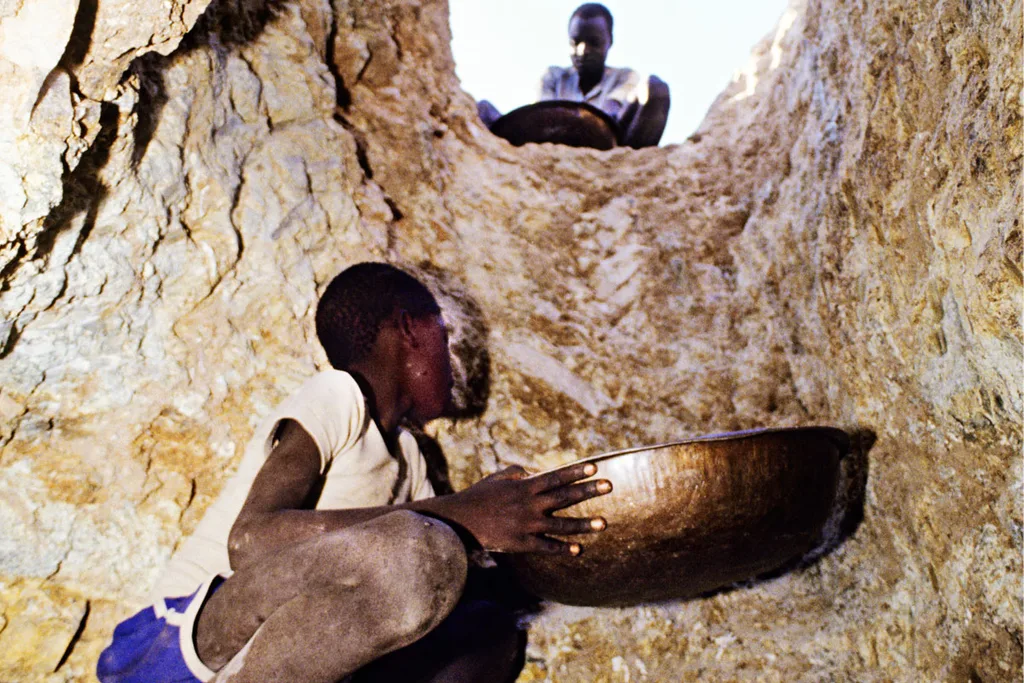Ollie never leaves the house without her crystals. The 28-year-old from Orange carries a chunk of rose quartz and a little slab of black onyx with her everywhere, both gifts from her mother when she first left home. “They are known to activate the heart chakra,” she explains, “healing emotional wounds, removing fears and generating self-love and love for others.” That’s the rose quartz. The black onyx is to ward off negative energy. Pendants of lapis lazuli and moonstone hang around her neck and a smoky quartz ring, a gift from her partner, is wrapped around her right ring-finger. “I immediately picked out the ring when I saw it,” Ollie says. “It was calming and special to me.” She’s far from alone in immersing herself in crystals – in fact, they’ve never been cooler.
Adele swears by them to combat stage fright; Jenna Dewan handed them out as party favours at her 2009 wedding to Channing Tatum. Gwyneth Paltrow, the doyenne of translating all things woo-woo into common parlance, sells a bag of eight through her lifestyle platform, Goop, for $125. Miranda Kerr might be the biggest crystal devotee of all: she drinks water out of a crystal bottle, stashes a chunk of quartz in her bra and filters every single one of her Kora Organics products through the supercharged minerals for a powerful infusion of healing energy. “I believe in the power of intention and attention,” Kerr has said. “Having been around crystals for so long, they … work for me and I wanted to share that with everyone.”

In the democratic Republic of Congo, children as young as seven work in crystal mines.
Meanwhile, Google searches for “crystal healing” increased by 40 per cent between 2014 and 2018. But beyond the glamour there’s a dark side to this obsession with healing rocks. The crystal mining industry is unregulated and unmonitored, a veritable Wild Wild West in countries such as the Democratic Republic of Congo, where children as young as seven work in copper and cobalt mines that extract crystals such as quartz as by-products. Or Myanmar, where the mining of jade – beloved for its soothing and protective energy – is worth an estimated $45 billion. Controlled by drug lords, the industry has “helped finance a bloody ethnic conflict and unleashed an epidemic of heroin use” among miners, according to The New York Times. They’re called “blood crystals” – stones extracted using unethical practices and sold to consumers in a scramble to keep up with the growing demands of the $6 trillion wellness industry. These stones aren’t the only questionable aspect of the ballooning Big Wellness business.
Global demand for avocados, for example, has led to the formation of ruthless cartels across Mexico that spearhead illegal deforestation. Almonds, which guzzle up to four litres of water to produce a single nut, are putting a strain on farmers everywhere from the Murray- Darling Basin to California, and yet almonds now account for 62 per cent of Australia’s total tree nut production. If you have stocked up on almonds and avocados, thinking you are making smart choices for yourself and the environment, you’re not the only one. Welcome to the world of greenwashing, where virtue-signalling messages of health obscure the sinister side of the wellness industry.
For Ashley, 29, it was the wellness benefits of almonds, particularly as an alternative milk, that encouraged her to make the nut a staple in her diet, going through two cartons of almond milk every week and a jar of almond butter a fortnight. It wasn’t until she was on holiday in California, where 80 per cent of the world’s almond crops are grown and where the thirsty trees require more water than all the indoor water use in the perennially drought-stricken state, that she discovered the impact of her favourite nut on the environment.“I definitely felt guilty for thinking they were a more sustainable choice,” she says. “As much as I would love to, I haven’t cut them out of my diet,” though she has reduced her intake.
Cashew nuts also feature prominently in the wellness industry, whether ground into butter or blitzed into vegan-friendly “cheese”. Grown using excessive quantities of water and shelled by hand by a largely female labour force in India, Brazil, Mozambique and Vietnam, some $20 million worth of cashews are imported into Australia, where we eat more than 16,000 tonnes of them every year. In India, workers have said that they are paid just $3.50 a day and can be left with scars from the acids within the cashew shells. In Vietnam, another major shelling region, Human Rights Watch (HRW) reported that drug rehabilitation centres were forcing addicts into shelling the nuts as part of “labour therapy”, beating them if they did not comply. This, according to HRW, “constitutes torture under international law”.
Catie Gett, naturopath and owner of Melbourne’s health-food destination The Staple Store, isn’t surprised that consumers aren’t always aware of these conditions. Between fair trade, organic, biodynamic, sustainable, zero-waste, ethical … there are myriad concerns facing shoppers every single time they head to the register. “It is so easy to get confused,” she says. “Superfood” is the label Gett describes as “one of the most detrimental marketing terms” we can use. “We increase the demand, refuse to start paying fair prices – that changes the ecosystem of the lands in these countries – and then we move on to the next ‘superfood’,” Gett explains. The South American acai berry, which is used as a base for colourful smoothie bowls, is a good example. “Why would you import acai when we grow beautiful blueberries that are spray-free and just as healthy for you?” she asks.
Turmeric is another example. The vibrant yellow spice had been used in Ayurvedic medicine for centuries before it crossed into the wellness world in 2016 courtesy of Paltrow, again, who raved about a turmeric drink with almond milk on Goop. The fact you can now buy a turmeric latte at Starbucks proves how mainstream it is. Turmeric imports have grown by 40 per cent, to $5 million, in Australia in the past year alone.

Sana Javeri Kadri, founder of Diasporo Co.
Sana Javeri Kadri, a Mumbai native based in California, watched the turmeric boom with interest. She wondered who was benefiting from the huge demand for the spice: Western companies or Indian ones? After digging for information, Kadri learnt the spice market in India was structured in such a way that farmers would receive as little as two per cent of the final revenue for their product, which would often change hands many times before it ended up in trendy food boutiques at a highly inflated price. In 2017, she launched her company Diaspora Co. to sell high-quality turmeric direct from a single farmer to consumers. “It’s often hard to see who is profiting from a system,” Kadri explains. “My attitude has been that you should know where something comes from and honour where it comes from and try to make sure that money is going back to where it comes from.”
Sophie McComas, 31, co-host of the Highly Enthused podcast, is one of the many fans of Diaspora’s aromatic, flavourful turmeric. “What was disturbing to me was that I had never really considered the source of my spice collection, or looked into it at all,” McComas admits. “I’m conscious of where I source fresh produce from, but didn’t give a second thought to the spices I buy. I was embarrassed I’d been contributing to a trade that has exploitation so deeply embedded in it, and hadn’t thought to check.”
Checking the provenance of our products isn’t always easy, though. The problem with crystal mining is that the process of extraction and its resulting supply chain is so opaque and impenetrable that no-one knows, exactly, who is benefiting from the boom. In 2018, The New Republic published an explosive report revealing just how little is known about where that protective black onyx or that love-channelling rose quartz Ollie keeps with her at all times, has come from. Before speaking to marie claire, Ollie admitted that she had no idea that crystals had such a murky provenance. Now, she’s committed to seeking out ethically sourced crystals.
Some crystals are lifted directly from the ground, others require mining to extract them. There is no regulatory body overseeing the process to make sure that it is in line with a global set of ethical practices for mining healing crystals, because there is no global set of ethical practices for mining healing crystals. The crystals that end up in stores have made their way there through a convoluted network of wholesalers. Many websites, including Paltrow’s Goop, do not list the country of origin of their stones. A petition demanding Goop do so gained almost 17,000 signatories.
Knowing where your crystals come from is akin to knowing where your meat or eggs originated,” explains Colleen McCann, author of Crystal Rx (HarperCollins, $44.99). “We want free-range and farm-to-table fresh, right? Since everyone can’t personally go digging for their own gems in a mine, what I can advise is to get to know the shop owner and ask questions.”
Shops such as Brisbane’s Unearthed Crystals pride themselves on only selling ethically sourced stones from small, family-owned mines in India, China, Africa and the US. Peta Snelson, director of Unearthed Crystals, says that we need to be wary of over-mining this non- renewable resource – as there is only a nite amount of healing crystals available in the world. “Think about it,” she says, “these stones take millions of years to form and here we are ripping them from the earth, tonne by tonne.”
So, what to do? Remember that consumers have power and your choices matter. Educate yourself on the issues that matter to you, whether ethical practices or sustainable production. Ask questions and shop locally. “I definitely don’t think I am this beacon of sustainable eating all the time,” Kadri says. She stresses that the onus to force real, sustainable change doesn’t sit solely on the consumer. “Conscious consumption isn’t going to save the world,” she notes. “Policy, organisation and activism is what is actually going to change the world.”
Balance is key: while eating locally is important, it’s also important to support farmers in foreign countries reliant on exports for their income. Know that while the water footprint of almonds is dangerously high, other kinds of milk aren’t necessarily any better. Making sustainable choices is never going to be black and white; it will always involve weighing up options to find the one that is right for you. You can have your almonds and eat them too, basically, as long as you know where they came from. And preferably they will come from a farm in Australia that has a plan for managing water wastage. As Vandyke puts it, “There is no hard and fast rule for anything, because we need to be flexible and adaptable to local circumstances. Remember, sustainability has to be sustainable for you.”










